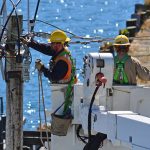One Year Later, Hurricane Ian Recovery Continues

Image courtesy of CityofStPete under Attribution-NoDerivs 2.0 Generic License, resized to 700 x 391 pixels.
In Sept. 2022, Hurricane Ian devastated parts of Florida. Ian was a Category 4 hurricane, with maximum sustained winds of 155 mph, when it breached the Gulf of Mexico. It then became the strongest hurricane to hit Florida since Hurricane Michael in 2018 and caused an estimated $115 billion in damage – the third costliest to ever hit the U.S., following Katrina and Harvey.
Fast forward 1 year later, and, due to the sheer scale of the damage, the recovery efforts remain ongoing. Luckily, FEMA has allocated billions of dollars to help.
How FEMA has Helped with the Hurricane Ian Recovery Efforts
As of the time of this writing, FEMA has provided nearly $8.7 billion in financial support for this effort. This includes:
- $1.13 billion in grants to nearly 400k households across 26 counties.
- Nearly $2 billion in disaster relief loans for homes and businesses.
- Nearly $4.4 billion for 47k claims filed through the National Flood Insurance Program.
- Approximately $1.3 billion to reimburse utilities/agencies for the costs of debris removal, infrastructure repair, etc. Debris removal in particular has proven to be one of the most daunting aspects of the recovery effort.
In addition, FEMA coordinated over 5,000 federal employees based out of 57 disaster recovery centers who consulted with survivors and visited over 350k homes. FEMA also brought in several federal agencies to support the recovery, including the U.S. Army Corps of Engineers, Dept. of Health and Human Services, Dept. of the Interior, Dept. of Agriculture, the EPA, and the SBA.
Obviously, this recovery has been a monstrous undertaking. While local utilities provided the boots on the ground so to speak, a recovery of this size will always require federal funding. Although there is no definitive timeline for when the Hurricane Ian recovery effort will finally wrap up, we can at least be confident that, thanks to the federal government, the effort has been moving forward at the fastest velocity possible.



